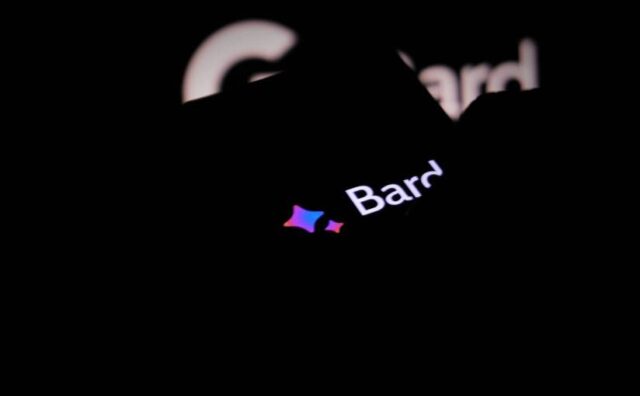Google has been at the forefront of the development of chatbots in recent years, which have become increasingly popular. Since its debut earlier this year, the tech giant’s Bard AI chatbot has been making waves, and now it has some brand new features that will make it stand out from the crowd. In this article, we’ll examine the most recent updates to Google Bard, such as the search engine’s improved visual response time, its ability to read aloud its findings, and more.
Google’s Bard Will Read Aloud to You
Google Bard’s ability to read aloud its results is one of its most interesting new features. According to a recent blog post by Google, this is a great way to “correct pronunciation of a word or listen to a poem or script.” Bard’s spoken responses will be localized into over 40 languages, making it usable by people worldwide.
Type in a question and hit the play button to hear Bard’s answers. Users can begin taking advantage of the spoken responses immediately.
Most Impressive –Visual Cues
Users will also be impressed by Google Bard’s new ability to respond to visual cues. Launched in English and set to roll out to additional languages “soon,” this was first demonstrated at Google’s I/O conference in May.
This allows users to include visuals with their prompts, such as a picture of two dogs requesting a humorous caption. This is a smart application of visual AI that will make interactions with chatbots more exciting and fun for everyone involved.
Speak and display visual content
Google Bard can now speak and display visual content, among other enhancements. The ability to bookmark and rename discussions is one such feature. This method is helpful because it lets you keep track of conversations and ensures that none of them are forgotten.
Sharing capability
Sharing user responses with friends is a helpful way for users to work together and get input on their chatbot experiences. In addition, users can now customize the voice and tone of their responses from Bard.
Google initially released Bard this year and was restricted to the United States and the United Kingdom. Since then, however, the chatbot has been expanded to many more locations, including “all countries in the EEA [European Economic Area] and Brazil,” as stated by a Google spokesperson in a recent statement.
This is a significant achievement because the company’s planned Bard launch in the EU was postponed due to privacy concerns. However, Google has made adjustments to address these issues, and the Bard service is now available to users across Europe and beyond.
Continuing ahead of the curve
Google Bard is undeniably ahead of the curve when it comes to chatbot technology. The capabilities of Bard’s chatbot, such as its spoken responses and visual prompts, are redefining what a chatbot can be.
Naturally, this is only the start. It’s exciting to think about what the future of chatbots holds as AI technology develops and improves. This new technology has a promising future with Google Bard at the helm.
Overall, it’s safe to say that Google Bard is a game-changer in the realm of chatbots. Users worldwide will love Bard because of its new spoken and visual capabilities and other helpful features like pinning and renaming conversations. We can anticipate even more fascinating breakthroughs in the field of chatbot technology thanks to Google’s ongoing investment in this area.
First reported on The Verge
Frequently Asked Questions
Q: What is Google Bard?
A: Google Bard is an advanced chatbot developed by Google that incorporates artificial intelligence (AI) to interact with users and respond to their queries. It is designed to offer spoken responses, visual prompts, and various other features to enhance the chatbot experience.
Q: What are the new features of Google Bard?
A: Google Bard has introduced several noteworthy features. Firstly, it can read aloud its results, allowing users to listen to the answers to their queries. This feature is particularly useful for correcting pronunciation or enjoying the spoken rendition of a poem or script.
Additionally, Google Bard now responds to visual cues, enabling users to include images or visuals with their prompts. This feature leverages visual AI technology and enhances the interactive and engaging nature of interactions with chatbots.
Furthermore, users can bookmark and rename conversations to keep track of their discussions effectively. Sharing user responses with friends is now possible, providing a collaborative way for users to seek input on their chatbot experiences. Lastly, users can customize the voice and tone of the responses from Google Bard.
Q: How does Google Bard’s ability to read aloud results work?
A: Google Bard’s ability to read aloud results allows users to listen to the spoken responses instead of reading them. Users simply type in their question or prompt and can click the play button to hear Bard’s answers. This feature is beneficial for various purposes, such as correcting pronunciation, listening to a poem or script, or accommodating users who prefer audio content. It supports over 40 languages, making it accessible and useful for people worldwide.
Q: How does Google Bard respond to visual cues?
A: Google Bard has been enhanced to respond to visual cues from users. This means that users can include images or other visual elements along with their prompts or questions, and Bard will consider these visual cues when generating a response. For example, users can provide a picture of two dogs and ask for a humorous caption, and Bard will respond accordingly. This feature taps into the capabilities of visual AI, making interactions with chatbots more engaging and enjoyable.
Q: Where is Google Bard available?
A: Initially, Google Bard was launched in the United States and the United Kingdom. However, it has since expanded its availability to include all European Economic Area (EEA) countries and Brazil. This wider availability enables users across different regions to benefit from the features and capabilities of Google Bard.
Q: What advancements has Google made in addressing privacy concerns with Bard?
A: Google faced privacy concerns related to the launch of Bard in the European Union (EU), which led to the postponement of its introduction. However, Google has taken steps to address these concerns and ensure compliance with privacy regulations. As a result, Google Bard is now available to users in the EU and other regions beyond the United States and the United Kingdom. These adjustments demonstrate Google’s commitment to privacy and its dedication to providing a secure and trustworthy chatbot experience.
Q: How does Google Bard contribute to the development of chatbot technology?
A: Google Bard represents a significant advancement in chatbot technology. Its features, such as spoken responses, the ability to respond to visual cues, and customization options, redefine the capabilities of chatbots. Google Bard sets a new standard for chatbot interactions by incorporating AI and leveraging cutting-edge technologies. It demonstrates the potential for chatbots to be more dynamic, engaging, and adaptable in meeting user needs. Google’s investment in developing Bard showcases the company’s commitment to advancing the field of chatbot technology.
Q: Can users expect further improvements in chatbot technology?
A: Absolutely. Chatbot technology continues to evolve rapidly as AI advancements are made. Google Bard is just one example of the progress being made in this field. As AI technology develops further and researchers and developers explore new possibilities, we can anticipate more fascinating breakthroughs in chatbot technology.
The future holds the potential for even more sophisticated chatbots with enhanced natural language processing, better contextual understanding, improved personalization, and seamless integration with various platforms and services. As exemplified by Bard, Google’s ongoing investment in chatbot development hints at an exciting and promising future for this technology.
Featured Image Credit: Mojahid Mottaki; Unsplash; Thank you!







